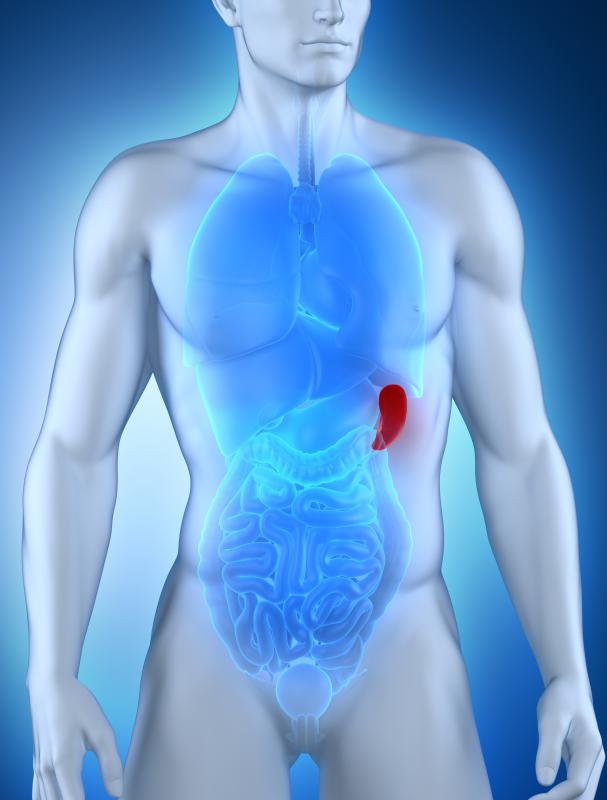At WiseGEEK, we're committed to delivering accurate, trustworthy information. Our expert-authored content is rigorously fact-checked and sourced from credible authorities. Discover how we uphold the highest standards in providing you with reliable knowledge.
What is Indirect Bilirubin?
Indirect bilirubin is a chemical compound formed by the breakdown of heme. It is produced in the spleen and released into the bloodstream to circulate to the liver, where it is bound to albumin so it can be eliminated by the body, primarily in the feces. Abnormal levels of indirect bilirubin can be indicative of a disease and a doctor may request a blood test to check bilirubin levels if there are concerns about an ongoing medical issue, most particularly jaundice, where the skin and eyes become yellowed.
When heme is broken down, the orange-yellow pigment bilirubin is one of the byproducts. Indirect bilirubin is not soluble in water, although it is soluble in fats. The spleen sends the pigment to the liver, where it is conjugated with albumin to make it water soluble. At this point, it becomes known as direct or conjugated bilirubin. High levels of direct bilirubin in the body can cause jaundice and indicate that a duct in the liver is blocked, or that a patient is experiencing another medical issue. Anemia and transfusion reactions can both cause an elevation in indirect bilirubin.

Laboratories determine indirect bilirubin levels by measuring total bilirubin and then subtracting direct bilirubin to see how much is left. In healthy individuals, total bilirubin ranges between .3 and 1.9 milligrams per decaliter (mg/dL). Direct bilirubin is usually less than .3 mg/dL. Higher levels than this can cause jaundice and other problems, and are signs that something is going wrong with the way the body processes heme and bilirubin. It is important to determine what is going on with the use of additional testing, medical imaging studies, and other diagnostic options.

When people take a bilirubin test, they are usually asked to fast for at least four hours before the test, and they may need to temporarily stop taking certain medications. A doctor can provide specific directions for a patient. The test involves a small blood draw. Results are usually returned very quickly, especially if a doctor's office has a lab, and once the test results come back, people can discuss additional tests, as well as treatment options to address the rise in bilirubin levels.

Patients may want to be aware that results can vary between labs. If a test is unusually high and a patient seems healthy, a repeat of a test may be ordered to see if the results were a fluke. Failing to follow directions in preparing for the test can also result in a skewed lab result.
AS FEATURED ON:
AS FEATURED ON:



















Discussion Comments
what if your level of bilirubin indirect is low like 0.1. what may be the cause?
Post your comments